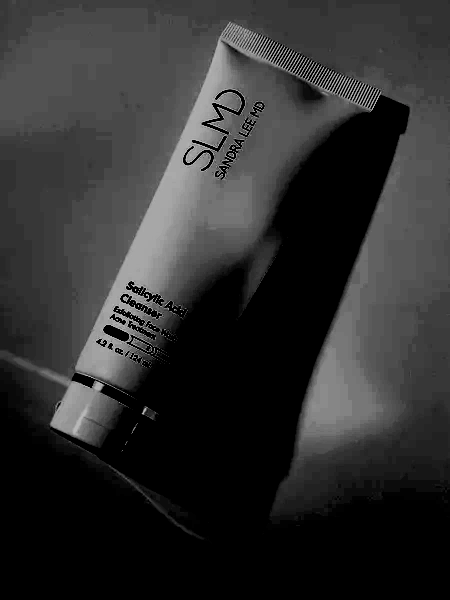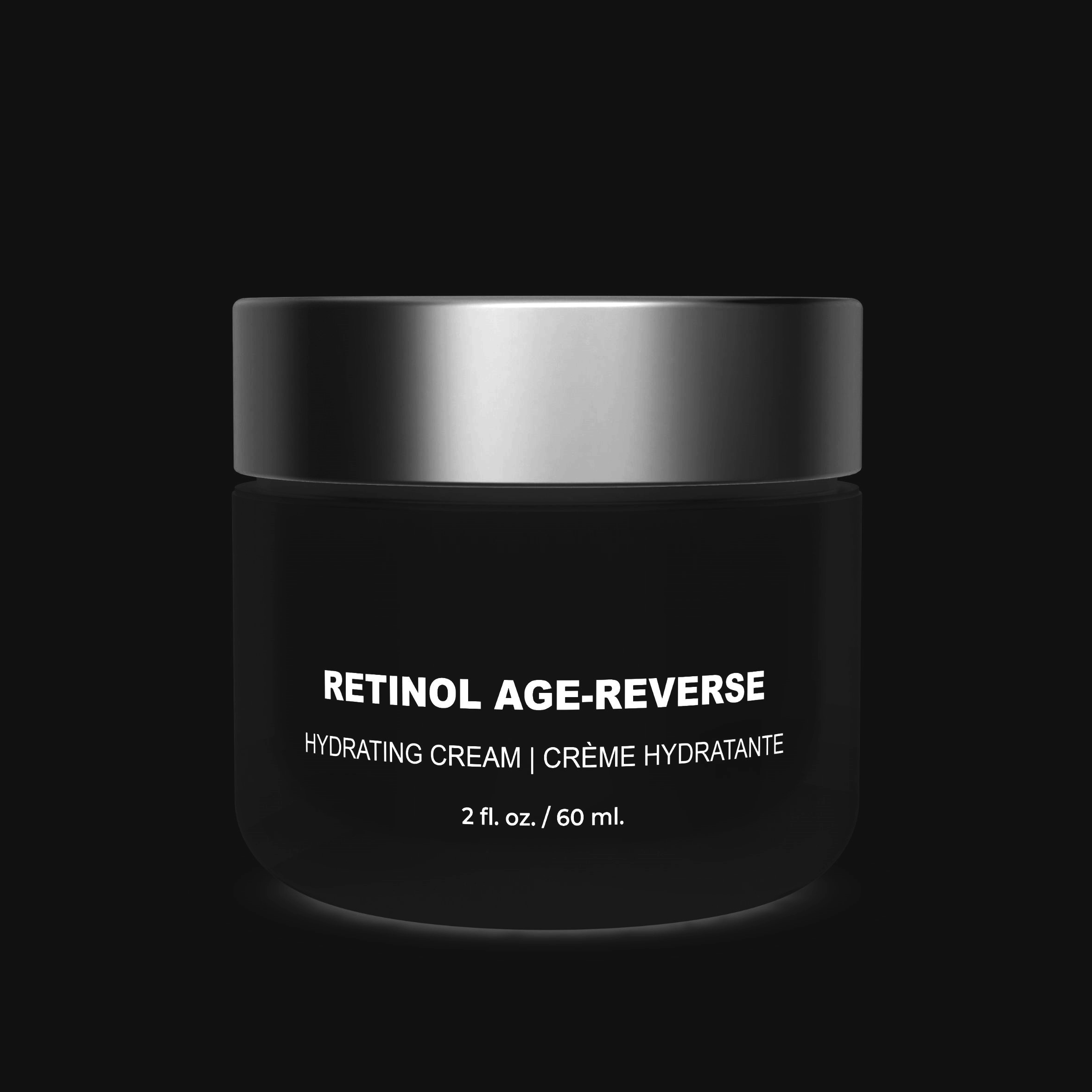What is Salicylic Acid?
To begin, salicylic acid can be extremely beneficial in eliminating blackheads and decreasing persistent acne. Because it is an oil-soluble beta hydroxy acid, it can get deep into your pores and clean them thoroughly. Salicylic acid penetrates and dislodges the gunk (sebum) so that it is no longer stuck inside the pore. This helps clear your pores, preventing the buildup of sebum and dead cells that can cause acne breakouts. Furthermore, “salicylic acid is structurally comparable to the active ingredient in aspirin, which means it reduces inflammation and is effective for both inflammatory and noninflammatory acne.” The skin-care ingredient can be found in acne-fighting over-the-counter cleansers and moisturizers, as well as higher concentration salicylic acid peels and spot treatments.
Benefits of Salicylic Acid
Removes Excess Oil from the Pores | GREAT FOR OILINESS
If you have oily skin, salicylic acid is an essential element for removing excess oil and reducing oil levels in the future. Because salicylic acid is oil-soluble, it exfoliates the lining of your pores and reduces oil buildup. Why is this significant? Because salicylic acid can go beneath excess oil and dead skin deep within your pores, unlike other chemicals that can just reach the surface of your pores. In addition to providing a thorough cleansing, salicylic acid inhibits sebocytes from producing extra oil (sebocytes are the cells that produce your skin’s sebum/natural oil).
Removes Deceased Skin Cells | UNCLOGS PORES
Salicylic acid is a peeling agent that stimulates skin cell renewal by removing dead skin cells. Salicylic acid is a desmolytic, which loosens the connections between corneocytes (the outermost layer of skin cells). As a desmolytic, salicylic acid is a more gentle exfoliation than keratolytics azelaic acid and benzoyl peroxide. Keratolytics provide a deeper exfoliation, but may be more irritating to delicate skin. All three components are comedolytic, which means they clear pores and prevent the formation of subsequent whiteheads and blackheads.
Prevents Future Acne | KEEPS PORES CLEAN
As a comedolytic, salicylic acid reduces the formation of future whiteheads and blackheads. By maintaining clean pores, whiteheads and blackheads caused by excess oil or dead skin cells will not grow. FYI, benzoyl peroxide and azelaic acid are also comedolytics.
Reduces the Acne Bacteria | GREAT FOR ACNE & BLEMISHES
Acne bacteria does not like oxygen (the reason why it thrives under clogged pores where no fresh air blows). As a result of salicylic acid’s ability to unclog and exfoliate pores, fresh air may enter the skin, creating an oxygen-rich environment that is less hospitable to acne germs. It is crucial to note, however, that while salicylic acid can inhibit acne-causing bacteria, it cannot destroy it altogether.
Other chemicals, such as benzoyl peroxide, can literally kill acne-causing bacteria if you have moderate to severe inflammatory acne (thank goodness). If you have cystic acne, consider azelaic acid.
Ameliorates Inflammation | GOOD FOR ACNE & PSORIASIS
Salicylic acid occurs naturally in willow bark, which also contains the molecule salicin. Salicin, a compound related to aspirin, has anti-inflammatory effects that soothe sensitive, inflamed skin. This implies a reduction in acne-related redness, irritation, and puffiness. Moreover, salicylic acid is a popular topical treatment for psoriasis inflammation.
How does Salicylic Acid work?
In order for salicylic acid to remove dead skin cells, acne, and sebum it first penetrates deeply within the skin to the inner layers of skin. Which is why it is an excellent component for battling acne, particularly blackheads and whiteheads.
A dermatologist in Los Angeles observes that after salicylic acid reaches the skin, it “dissolves skin debris that clogs pores, [acts] as an anti-inflammatory, and also helps red, inflamed pimples and pustules vanish more swiftly.”
According to Schueller and Dr. Wesley, the chemical is capable of penetrating the skin to such a depth that it breaks down the connections that are found between the cells of the skin. According to Schueller’s explanation, “Once it has pierced the epidermis, the acidic part of the molecule can break down a portion of the intracellular ‘glue’ that binds skin cells together.”
What to Consider When Utilizing Salicylic Acid
Avoid the sun’s rays
If you are using salicylic acid, you should avoid direct sunlight. (You might want to skip your daily spot treatment if you’re on vacation at the beach, for example.) “When the layers of dead skin cells on the skin’s surface are removed, such as through exfoliation, the skin loses some of its physical protection from the sun’s UV rays,” explains Dr. Lortscher. When taking BHAs, it is very vital to be attentive with sunscreen application, he explains.
Avoid using it during pregnancy
If you’re pregnant, you’ll want to avoid salicylic acid. Since aspirin can cause birth deformities, significant blood loss after delivery, and other difficulties during pregnancy, it is advised to avoid salicylic acid during pregnancy, according to Dr. Lortscher. You can instead use over-the-counter cleansers containing benzoyl peroxide, which has a different chemical composition and is safe to use during pregnancy.
Avoid using it if your skin is too dry
Salicylic acid is often more beneficial for oily skin. Dr. Lortscher explains, “Since salicylic acid can be drying, it is best for oily skin types that can tolerate a small amount of drying.”
“Use benzoyl peroxide and salicylic acid with caution if you have dry skin,” he advises. Try products with lower salicylic acid concentrations, such as one percent instead of two percent (which is the max amount considered safe amongst the general public). He argues that cleansers and washes may be preferable to leave-on creams and lotions due to the shorter period of time the substance is in touch with the skin.
It is present in strawberries
Actually, salicylic acid is present in strawberry fruit. “Strawberries are rich in beta hydroxy acids (BHAs), such as salicylic acid, as well as other ingredients such as alpha-hydroxy acids (AHAs), which aid in acne reduction,” says Debra Jaliman, M.D., board-certified NYC dermatologist, assistant professor of dermatology Icahn School of Medicine at Mount Sinai, and author of Skin Rules: Trade Secrets from a Top New York Dermatologist. “Half a cup of sliced strawberries can be mashed and applied on the face for 10 minutes. This will assist in clearing acne and pimples “she asserts While many store-bought treatments might be just as mild on the face, this strawberry mask is a completely harmless and pleasant do-it-yourself alternative that provides a chance to take a vacation from product while still receiving the advantages of salicylic acid. (And a brief spa session for self-care, to boot.)
It can cause irritation if employed improperly
Salicylic acid can cause irritation if it comes into touch with your eyes, nose, mouth, groin, or any broken skin, according to Jaliman.
“Salicylic acid can become hazardous if taken too aggressively or for an extended period of time,” says Paul Dean, M.D., a dermatologist at Grossmont Dermatology Medical Clinic in San Diego and the founder of Skin Resource M.D. It is capable of removing the outermost layer of skin and causing severe irritation and pain. For instance, concentrations between 17 and 27 percent should not be used on the face, according to him (though you won’t find this in a typical over-the-counter cleanser). Long-term use can cause your skin to become dry and thin, leading to an increase in fine lines and wrinkles, however this can be avoided by adjusting dosages and frequency of use.
Discuss with your dermatologist the frequency and duration of use. Dr. Lortscher advises against using salicylic acid every day as a general rule. Instead, begin with one to two days per week and then check with your dermatologist to determine if you can or should increase. (Don’t make these shower blunders that cause dry skin, either.)
Utilize items formulated for your situation
The concentration percentage is significant and varies from product to product. “What is meant for warts is not always designed for acne,” explains Dr. Garshick. If you elect to utilize a 17 percent concentration wart-removal solution as a spot treatment for your blemishes, your skin will likely get rather irritated. Avoid suffering by purchasing separate remedies for your various skin issues.
It complements glycolic acid effectively
“Like salicylic acid, glycolic acid eliminates dead skin cells and lowers inflammation connected to acne and other skin disorders; but, unlike salicylic acid, glycolic acid does not irritate the skin and can be used in regular skin-care products,” explains Dr. Dean. Typically found in anti-aging moisturizers or face masks at low concentrations, glycolic acid is perfect for rebuilding collagen and smoothing and revitalizing your skin, as he says. “Using products containing both glycolic acid and salicylic acid would be advantageous, as glycolic acid replenishes skin moisture while salicylic acid depletes it,” he says.
Side Effects of Salicylic Acid
It is possible to use too much salicylic acid. The principal adverse impact of salicylic acid is its propensity to irritate and dry the skin of those who are extremely sensitive or who use it excessively. Some individuals may experience dryness, peeling, redness, and skin irritation, depending on the concentration and quantity of applications. Nonetheless, the percentage of salicylic acid in the majority of over-the-counter lotions and cleansers is often less than two percent. “It can be well tolerated when used appropriately,”
While rare a serious adverse reaction may occur when using Salicylic acid. Stop using this medication and seek immediate medical attention if you get the following symptoms: hives, itching; difficulty breathing, dizziness; and swelling of the face, lips, tongue, or neck.
Also cease using topical salicylic acid and call your doctor immediately if you have:
- A strong headache, ringing in the ears, hearing impairments, and cognitive issues;
- Abdominal discomfort, vomiting, or diarrhea;
- A sensation of dizziness, as if one would pass out;
- A difficulty breathing;
- Extreme skin burning, dryness, or irritation.
Common adverse effects of topical salicylic acid may include:
- Minor inflammation, redness, or peeling of the skin;
- Alterations in the hue of treated skin (usually whitening)
Warnings
Salicylic acid topical can cause a rare but serious allergic reaction or severe skin irritation. Stop using salicylic acid topical and get emergency medical help if you have: hives, itching; difficult breathing, feeling light-headed; or swelling of your face, lips, tongue, or throat.
Ask a doctor or pharmacist if this medicine is safe to use if you have:
liver or kidney disease; diabetes; or blood circulation problems. Ask a doctor before using this medicine if you are pregnant or breastfeeding.
Work Cited :
Arif, T. “Salicylic acid as a peeling agent: a comprehensive review”. https://www.ncbi.nlm.nih.gov/pmc/articles/PMC4554394/



